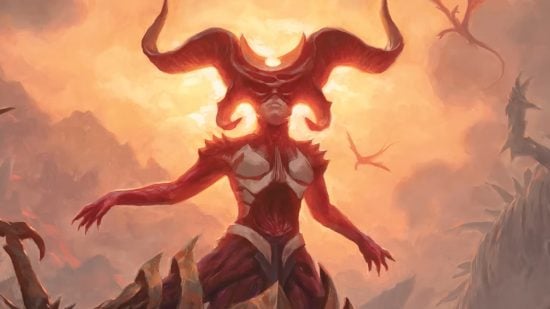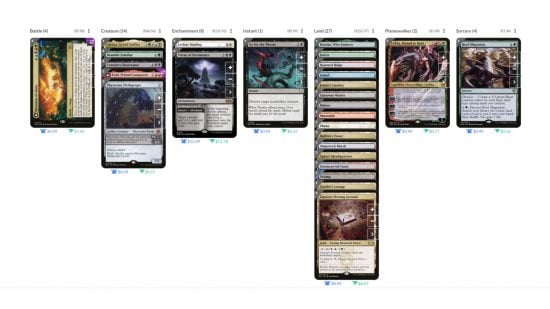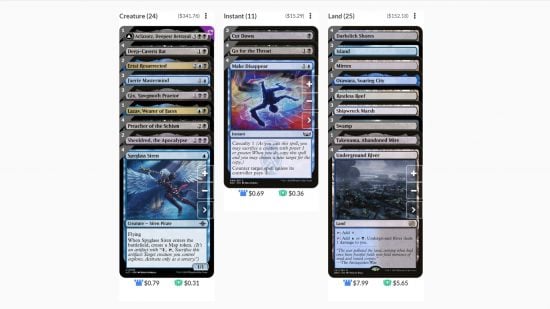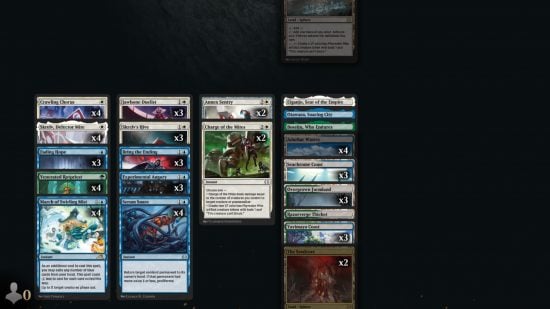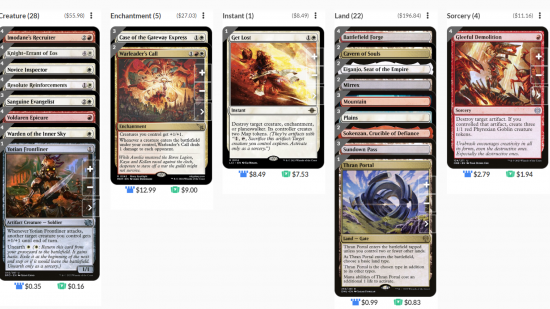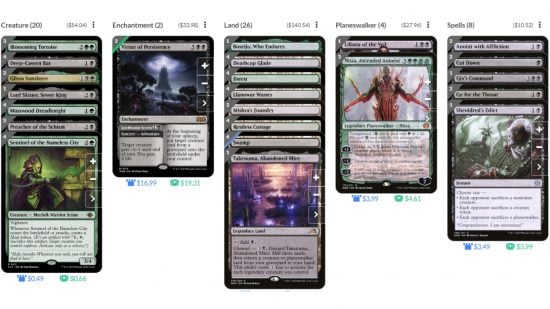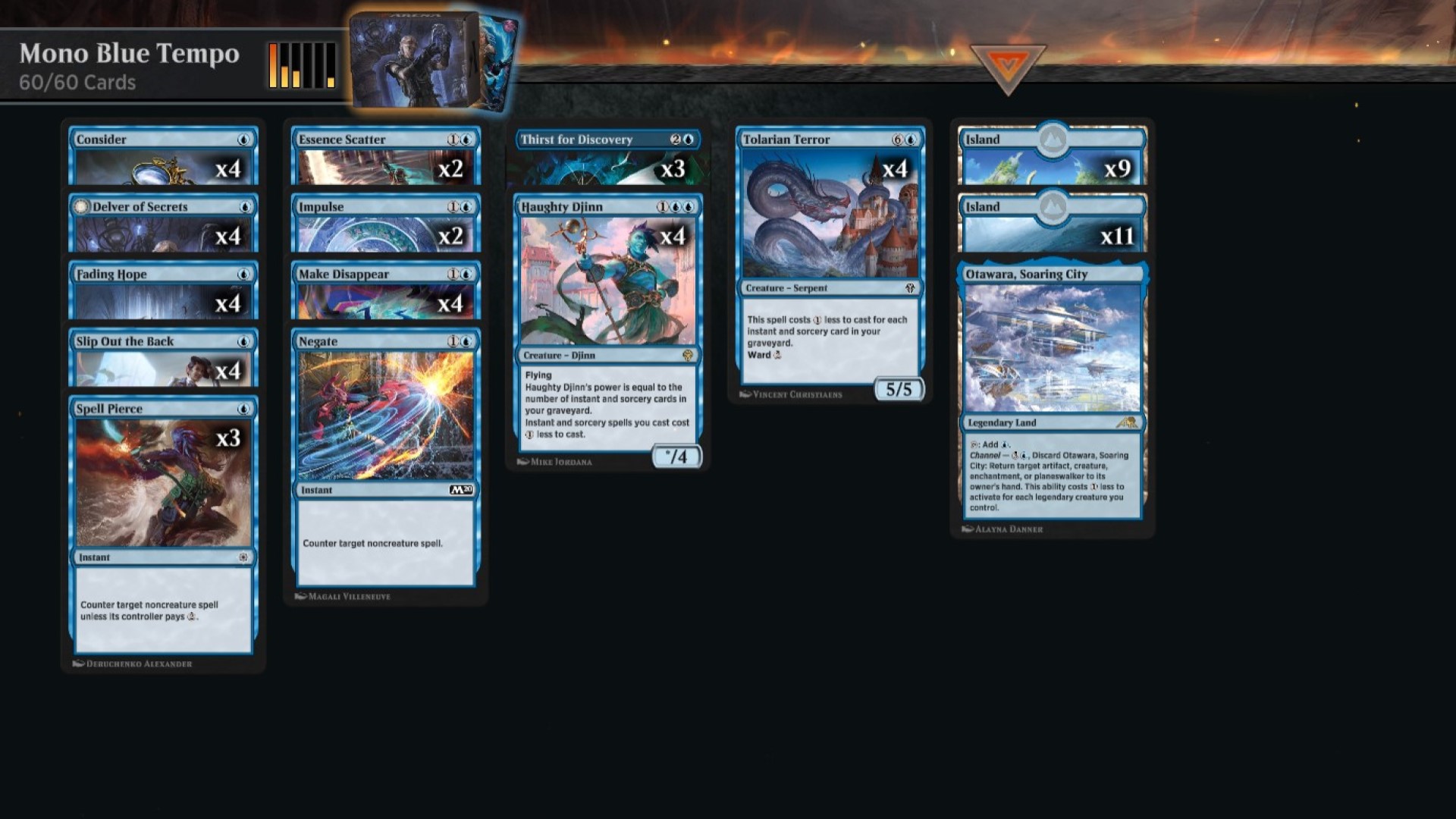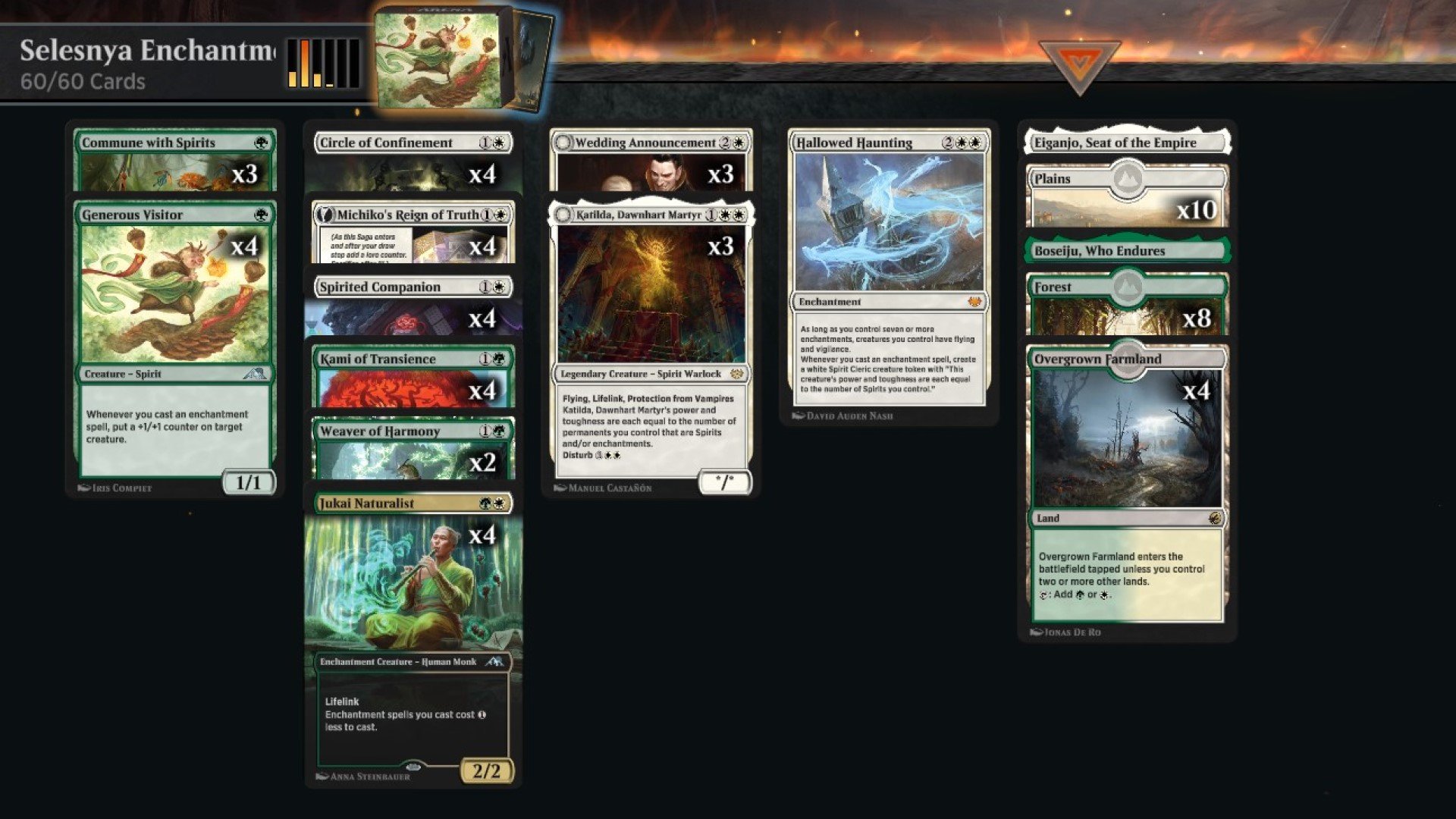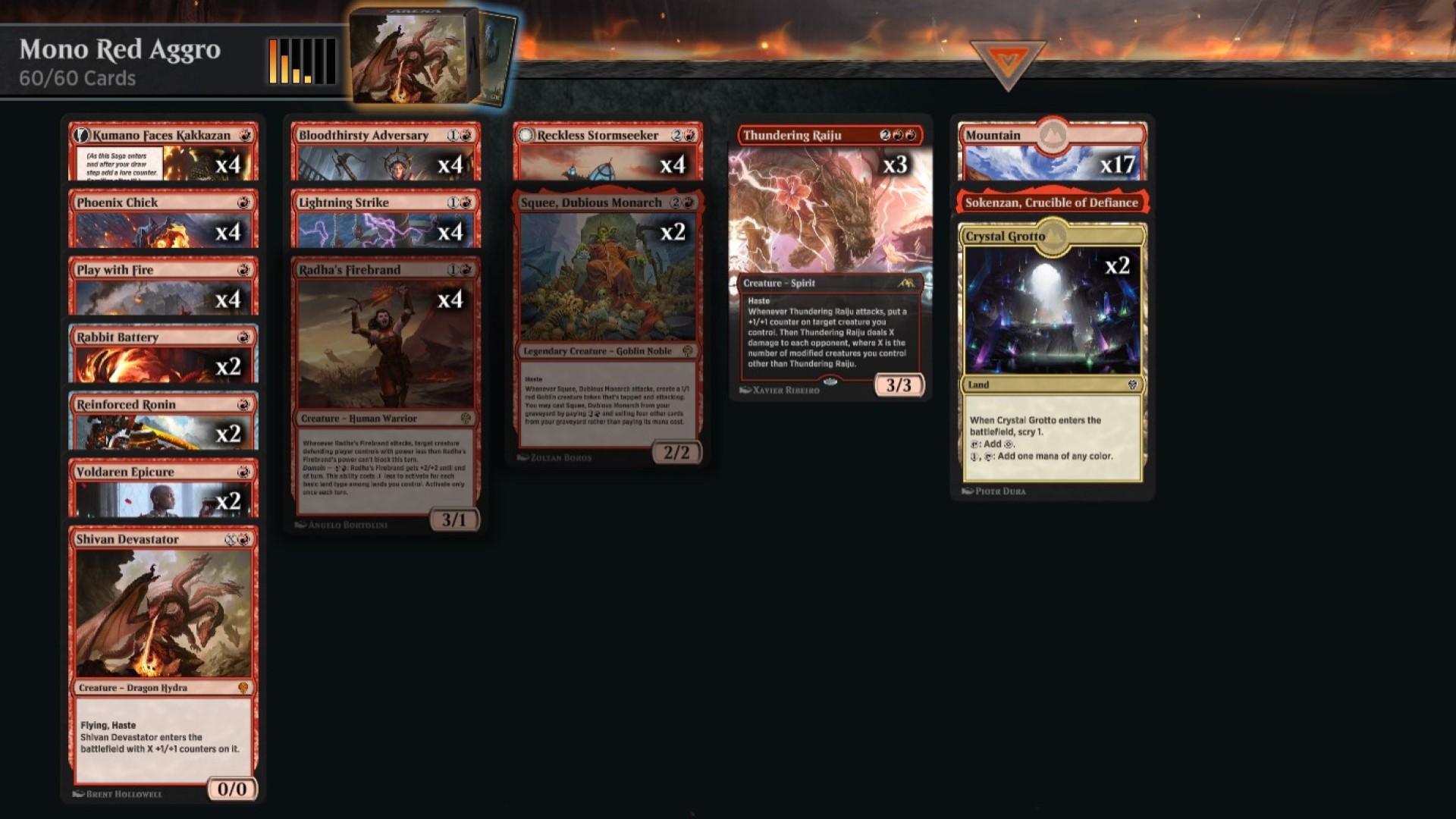Looking for the best MTG Arena decks? For anyone having a hard time grinding through Magic: The Gathering Arena’s ranked Standard mode, there’s no shame in looking for help to start stacking up the wins. This guide explains the best MTG Standard decks in the current Arena meta, their key strengths, and what makes them so tough to beat.
In MTG Arena, the meta is constantly moving, especially since MTG Wilds of Eldraine is still quite new to us. Fresh brews appear week by week, utilising the best Wilds of Eldraine cards for Standard, and the best MTG Arena deck of the moment may soon be surpassed by a new variant.
The best MTG Arena decks in Standard right now are:
- Esper Legends – best legendary creatures deck
- Domain Control – best five color deck
- Dimir Midrange – aggressive midrange
- Bant Toxic – best synergy deck
- Boros Convoke – best tokens deck
- Golgari Midrange – Another flavor of midrange
- Azorius Soldiers – best tribal/typal deck
- Mono Blue Tempo – best mono blue deck
- Selesnya Enchantments – best enchantments deck
- Mono Red Aggro – easiest deck to play
It’s hard to keep up with the MTG 2023 release schedule, even if you’ve perfected how to build an MTG deck, have a great MTG deck builder to help you out, or have used all the MTG Arena codes under the sun. To give you a head start we’ve collected five MTG Arena Standard decks that can be ridden all the way to Mythic.
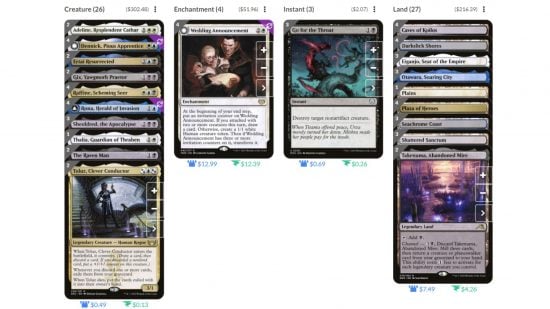
Esper Legends
The best legendary creatures MTG Arena deck is Esper Legends.
Pros
- Minimal complex synergy to work
- Packed with busted high value cards
- Sheoldred, The Apocalypse
Cons
- High rare count makes it expensive to build
The Esper (White/Blue/Black) MTG color combination is back on top. In the post-March of the Machine meta, Esper Midrange decks have been edged out by Esper Legends, a creature-focused build centred on legendary creatures.
Esper packs some of the scariest threat in Standard. Star of the show is Raffine, Scheming Seer, which draws cards and rewards you for building a board. Other key cards are Dennick, Pious Apprentice, and oh look, it’s Sheoldred again. You only want to include a couple of non-creature cards in this deck. Perhaps a removal spell or two, and Wedding Announcement is hard to pass up.
There’s not a ton of synergy to speak of in this MTG Arena deck, it just jams in a bunch of busted cards that generate value, threatening to get out of control quickly. As a result, it packs in the rares. This is one MTG deck that’s going to burn through a lot of wildcards.
Domain Control
The best five color MTG Arena deck is Domain Control.
Pros
- Excellent big-creature finishers
- Cheap removal
- Powered up by Wilds of Eldraine
Cons
- Weak to counterspells in the endgame
If you fancy doing something a little different, Domain Control is a five-color deck that’s managed to beat the odds and make it as one of the best MTG Arena decks in Standard right now.
The deck relies on the Domain cards from Dominaria United for its main tools, with the triomes from Streets of New Capenna to provide MTG Land types that power them up. This lets you gain some absurdly cheap removal in Leyline Binding, as well as a great finisher, Herd Migration.
Wilds of Eldraine has given some awesome new tools to this deck. Whereas previously you had to ramp as hard as possible to play your top end, the deck now uses Invasion of Alara to cheat the Adventure half of Bramble Familiar. This then then lets you get a gamewinning creature into play, from Atraxa, Grand Unifier to Etali Primal Conqueror.
Dimir Midrange
The most aggressive midrange MTG Arena deck is Dimir Midrange.
Pros
- Faster than most midrange flavors
- Easy to play
- Sheoldred, The Apocalypse
Cons
- Worse at recovering than other decks
- Often can’t block effectively
Another deck that’s moved to fill the midrange gap left by Rakdos, Dimir Midrange is an aggressive blue-black deck that generates plenty of card draw to keep your foot on the gas.
In a typical match with a Dimir Midrange deck you’ll plop down fliers on the first two turns, then go out of control with Gix on turn three. With the right play pattern, it’s very difficult for opponents to catch up.
Even if you don’t hold the golden cards in your opening hand, Dimir Midrange has plenty of card draw, and lots of opportunities to mess with your opponent, with Deep-Cavern Bat going for their hand, and Go For the Throat and Make Disappear dealing with whatever they play.
The downside to Dimir Midrange is things get ropey if you get on the back foot. When your opponent is beating down and you’re on defence, a flying 1/1 is not the kind of card that saves you.
Bant Toxic
The synergistic Bant Toxic deck is aggressive, but can win a long game.
Pros
- Not afraid of removal
- Counters Domain and other controlling decks
- Doesn’t play like a typical aggro deck
Cons
- Loses hard to other aggro decks
- Can run out of resources
It’s refreshing to have a new deck that’s not some flavor of midrange make our list of the best MTG Standard decks, and even nicer to have a pile of cards this synergistic to play with. Bant Poison is an aggressive toxic deck that looks to kill its enemies by making them hit 10 poison counters.
Key consideration needs to be placed on the utility lands you use in this deck. Mirrex can create more Phyrexian Mites with spare mana when your opponent doesn’t play anything you want to counter, while The Seedcore can often help you get an unlikely attack through.
A brilliant combo in the deck (and the primary reason it plays blue besides countermagic) is March of Swirling Mist and Venerated Rotpriest. With the right board state, this card will finish an opponent off in a flash using poison counters.
The key reason to play Bant Poison, besides it being a fun template, is that it’s strong against one of the other best decks, Domain. It performs well against removal and can often eke out wins against midrange decks.
This aggressive deck doesn’t care about life gain, and has decent reach – you can sometimes win a long game, seemingly out of nowhere. The downside is, it struggles hard against the more typical damage-based aggro decks.
Boros Convoke
Pros
- Explosive turns
- Laughs at spot removal
Cons
- Cries at board wipes
- Easily countered with the right sideboard
- Useless versus Control
In 2024, thanks to a number of powerful new red-white aggro cards, Boros Convoke took the leap from MTG Pioneer to Standard. This deck wants to run out loads of tokens and small creatures, then buff them up and swing with a wide board.
The deck gets its name from the Convoke card Knight-Errant of Eos, which is an essential part of the strategy. It allows you to reload and keep the pain coming, while effectively being a free card once you have creatures down.
The main problem this deck faces is that it’s easily countered by little sweeper effects. That means it struggles to be truly dominant, as players prepare for it more the more popular it becomes.
Golgari Midrange
Another strong midrange deck is Golgari Midrange – for now.
Pros
- Plenty of recursive threats
- Can deal with creatures and enchantments
- Strong against other midrange or aggro decks
Cons
- Typically weak to control or ramp
- Requires a high skill level
Golgari has its own powerful midrange deck. After almost a year of Rakdos domination there are now lots of good reasons to be in this color combo. Green and black gives you a suite of removal options. Black can cover creatures, while green takes care of pesky enchantments or artifacts. You’ve also got ramp options with Blossoming Tortoise, who also makes the manland Restless Cottage that much better (and gives it recursion).
The most important card in this deck, however, the piece that really makes it sing, is Mosswood Dreadknight. It’s a cheap, relevant body and a card draw spell bundled into one, and it won’t stay down, letting you get loads of value out of just one card. We’re getting vibes of the best adventure spells from original Eldraine here.
With Dreadknight and Cottage, you’ve always got something to spend mana on. This is obviously great, but can make the deck harder to use – since you’ll usually have lots of options each turn.
Azorius Soldiers
The best tribal (or typal) MTG Arena deck is Azorius Soldiers.
Pros
- Builds up an unstoppable board
- An aggro deck that can counter spells
- Decent at refilling your hand
Cons
- Weak against decks full of removal
- Can struggle in BO3 matches
Azorius Soldiers is an aggressive MTG Arena deck that’s been in Standard for ages now, but has recently had another big comeback. It’s a creature type deck based on soldiers, mainly built around cards from The Brothers’ War. The deck builds up a board quickly, then strikes in the skies thanks to the abilities of Harbin, Vanguard Aviator.
It’s intriguing that the deck has recently swapped the soldier Brutal Cathar out for the non-soldier Werefox Bodyguard. It seems having flash is enough of an upgrade to make up for the lack of synergy. Similarly, the deck added Knight-Errant of Eos, which lacks the MTG creature type, to get some much-needed card draw.
Mono Blue Tempo
The best mono blue MTG Arena deck is Mono Blue Tempo.
Pros
- Really, really, incredibly annoying to play against
- Has cheap answers to every attack
Cons
- Few creatures for board control
Something of an antidote to all the midrange MTG Arena decks floating around in Standard right now, Mono Blue Tempo relies on tons of cheap blue spells, and just a few potent threats to close out the game.
Using this Standard deck, you’ll frustrate your opponent with counterspells like Spell Pierce, bounce their creatures with Fading Hope, and dig for your big threats with Thirst for Discovery.
With their resources and patience dwindling, you then slap down a Haughty Djinn or Tolarian Terror (great with all the spells you’ve used), keep it safe with Slip out the Back, and use it to close out the game. Simple!
Selesnya Enchantments
The best enchantments MTG Arena deck is Selesnya Enchantments.
Pros
- Vast amounts of synergy from the start
- Affordable – doesn’t need many wildcards
Cons
- Weak to boardwipes as it can’t rebuild
Still kicking around from as far back as Kamigawa Neon Dynasty, this synergistic deck does just what it did at the start of last year. Selesnya Enchantments takes advantage of the best MTG enchantments and enchantment payoffs in Standard, piling up +1/+1 counters and throwing big dudes at your enemies.
Cards like Jukai Naturalist, Kami of Transience, and Generous Visitor all work together here to form an aggressive beatdown deck. Your cards all make each other better, and once you get going, it’s hard for an opponent to slow you down without mass removal that can reset the board. That’s why The Meathook Massacre’s banning puts this deck back ahead.
If you’ve taken a break from MTG Arena lately and want a deck that doesn’t use cards from the last few sets but can still win games, we recommend Selesnya Enchantments.
Mono Red Aggro
The easiest MTG Arena deck to play is Mono Red Aggro.
Pros
- Red deck wins (very simple to build and play)
- Fast and hard to stop
Cons
- Predictable
- Lacks longevity – it’ll never win a long fight
Okay, that’s enough clever stuff. Here’s a strategy that’s been around in Magic for ages, and always kills when new sets drop, MTG Standard rotation happens, or the meta is a little on the slower side.
Mono Red Aggro looks to punish slow decks by attack, attack, attacking with a load of little one and two drops (Phoenix Chick, Reinforced Ronin) and winning the game before your opponent even knows what’s happened. Burn spells like Lightning Strike can deal with annoying blockers, or finish the game once you’ve got the other player low.
Your aim with Mono Red Aggro decks is to hit your opponent hard and fast, pulling into a commanding lead before they can muster a proper defense or – your worst nightmare – find a board wipe spell.
Feeling a little lost digging through these competition-level decklists? Check out our beginner’s guide on how to build a MTG deck first. Alternatively, you can get a feel for the core mechanics that drive the game in our guide to all five MTG colors and what they mean.
